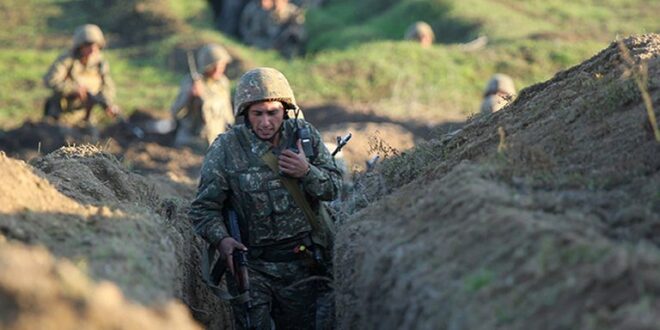Fighting recently erupted between Armenia and Azerbaijan, centered around the historically disputed territory of Nagorno-Karabakh.
Nagorno-Karabakh is de jure part of Azerbaijan, but is administered by the majority Armenian population, leading to lingering ethnic conflict.
Conflict between Armenia and Azerbaijan has the potential to drag in regional powers, including Turkey, Iran, and Russia.
The South Caucasus is a critical area for oil and natural gas pipelines carrying energy resources from the Caspian Sea to global markets.
Over the weekend fighting erupted between Armenia and Azerbaijan, centered around the historically disputed territory of Nagorno-Karabakh, a landlocked region located in the South Caucasus that has led to previous disputes between Yerevan and Baku. The two sides fought intense battles over the course of the late 1980s and early 1990s, with tens of thousands dying in conflict. The two countries have since engaged in numerous skirmishes over the years, with clashes in 2016 resulting in 200 deaths. In 2018, Armenian Prime Minister Nikol Pashinyan and Azerbaijani President Ilham Aliev worked to deescalate tensions along the Line of Contact. Tensions flared again this summer, with 16 people killed in July. But the fighting that took place over the weekend and that remains ongoing is even more serious, featuring artillery shelling and the deployment of heavy weapons and vehicles.
The conflict over Nagorno-Karabakh is frequently referred to as a so-called ‘frozen conflict,’ since it has remained unsettled for the better part of the past three decades. Ethnic conflicts proliferated after the collapse of the Soviet Union at the end of the Cold War, with some still unresolved, including Abkhazia (Georgia) and Transnistria (Moldova). The disputed territory of Nagorno-Karabakh is de jure part of Azerbaijan, but is administered by the majority Armenian population. The result has been lingering disputes and ethnic conflict, occasionally fueled by external actors, although this conflict has local roots based on parochial grievances. Both governments have released bellicose statements and at least so far, have refused to back down. More than two dozen people have been reported killed already, with those numbers expected to rise. Forces from Azerbaijan claim to have captured numerous villages already, while Armenia declared a state of emergency and mobilized its male citizens.
Conflict between these two countries has the potential to drag in regional powers, including Turkey, Iran, and Russia. Some have suggested that Azerbaijan planned its offensive to coincide with a time when the international community is particularly distracted, given the upcoming U.S. presidential elections and the global struggle with the COVID-19 pandemic. Baku could be looking to recoup territory it lost in the 1990s and to do so before any external states decide to step in and put an end to the fighting. Turkish support for Azerbaijan is a major factor in this most recent round of fighting, and Turkish President Recep Tayyip Erdogan has promised continued solidarity with and support for Baku, while simultaneously denouncing what he labeled as Armenian aggression. Russia ostensibly backs Armenia, where Moscow maintains a military base, placing Turkey and Russia on opposite sides of yet another conflict, in addition to Syria and Libya. The United States, Russia, and France are the ‘big three’ as part of a diplomatic settlement process that helped mediate a cease-fire in 1994.
From a geopolitical perspective, the South Caucasus is a critical area for oil and natural gas pipelines carrying energy resources from the Caspian Sea to global markets. Azerbaijan has benefited from its access to energy, using proceeds to build a technologically advanced arsenal of weapons, including unmanned aerial vehicles. Both Azerbaijan and Armenia possess surface-to-surface missiles, which could prove highly destructive to each side, respectively. Azerbaijani authorities have limited access to social media, and the tit-for-tat escalation is likely to feature a heavy dose of disinformation laundered by both sides. Each side has claimed that the other initiated the fighting. Armenia said that its forces shot down two helicopters and several drones, while Azerbaijan suggested that its forces have eliminated a dozen Armenian air defense systems. Reuters reported yesterday that Ankara deployed Turkish-backed rebels from northern Syria to Azerbaijan to join the conflict. The United States, Russia, and Iran have all called for an immediate cease-fire, although it remains unclear what, if any, mechanisms could be used to enforce or compel an end to the fighting.
 Eurasia Press & News
Eurasia Press & News


